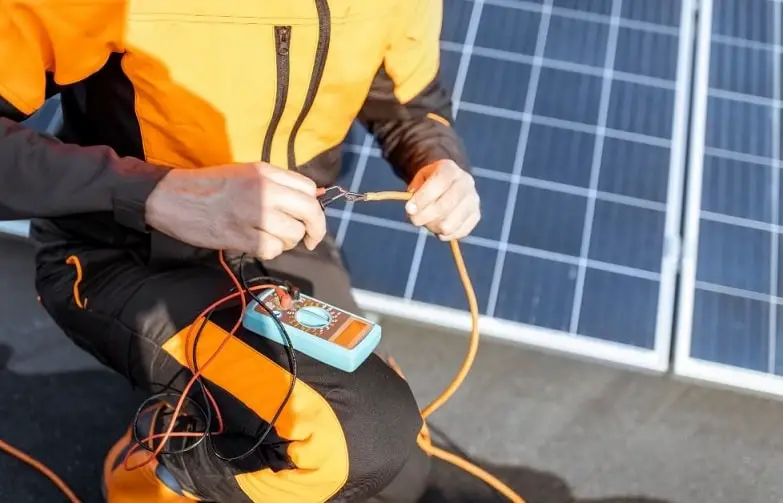How to Tell if a Solar Panel Is 12V or 24V? – A Quick Guide
Do you have a solar panel and are not sure if it is a 12V or 24V? There are a few ways you can tell.
Check the back of the solar panel
Check the back of the solar panel and look for the voltage output. The label will either say 12V or 24V.
This is the simplest and probably the quickest to find out. That said depending on the solar panel, the label may be small and you might need a magnifying glass to read it.
A more practical way is to use the camera of your phone and take a photo of it then enlarge the image on your phone.
However, there will be still times when you might not be able to see the voltage output. This may be the manufacturer has not included it on the label or it is wearing off. If this is the case, there are a few other ways to tell if your solar panel is 12V or 24V.
Check the peak wattage & current
If you know the wattage and current of your solar panel, you can use the simple equation to work out the voltage.
Watts = Volts x Amps
For example, if you have a solar panel that is rated at 175W and it produces a current of 7.42 amps, the voltage would be:
Volts = 175W / 7.42A
Volts = 23.6V
This is a quick and easy way to work out the voltage of your solar panel, however, don't expect the equation to point to the exact voltage number. The number will be close to the actual voltage output of your solar panel.
Check the number of cells
Another way to tell if your solar panel is 12V or 24V is by checking the number of cells in it. If the solar panel has 36 cells, it is a 12V panel. If the solar panel has 72 cells, it is a 24V panel.
However, it is important to note that there are some solar panels with 60 cells. These panels will be a 24V panel even though they don't have 72 cells.
Use a Voltmeter
If you have a voltmeter, you can use it to test the voltage of your solar panel. This is the most accurate way to test the voltage of your solar panel.

To test the voltage, connect the voltmeter to the positive and negative leads of the solar panel. Place the solar panel in the direct sun and take a reading. The measured voltage will typically be a bit higher than the actual voltage of the solar panel.
A 12V solar panel will measure around 18-22V and a 24V solar panel will measure 36-42V. Because the voltmeter measures the open-circuit voltage, it will be higher than the actual working voltage of the solar panel.
Check manufacturer's specifications
If you still can't tell if your solar panel is 12V or 24V, the last resort is to check the manufacturer's specifications. Almost all solar panels will have their voltage specifications in the product manual.
If you don't have the product manual, you can usually find it on the manufacturer's website.
Check the Nominal Wattage
24V solar panels are used in solar systems where higher energy output is required.
This is because a 24V solar panel can deliver more power than a 12V solar panel of the same size. Therefore, if you see a solar panel 1500W or higher, it will most likely be a 24V panel.
12V solar panels are used in smaller solar systems that don't require much power and initial investment. So the solar panels you see under 300W tend to be 12V. These are usually used in RV solar kits and small off-grid solar systems.
Conclusion
Although it is not a complicated task, it is important to know how to tell if a solar panel is 12V or 24V. As you can see, there are a few ways to tell if a solar panel is 12V or 24V.
The voltage output will be written on the label, but if it's not, you can check the number of cells or use a voltmeter. You can also check the manufacturer's specifications or the peak wattage and current.
Knowing the voltage output of your solar panel is important because it will determine the size of the solar system you need.


